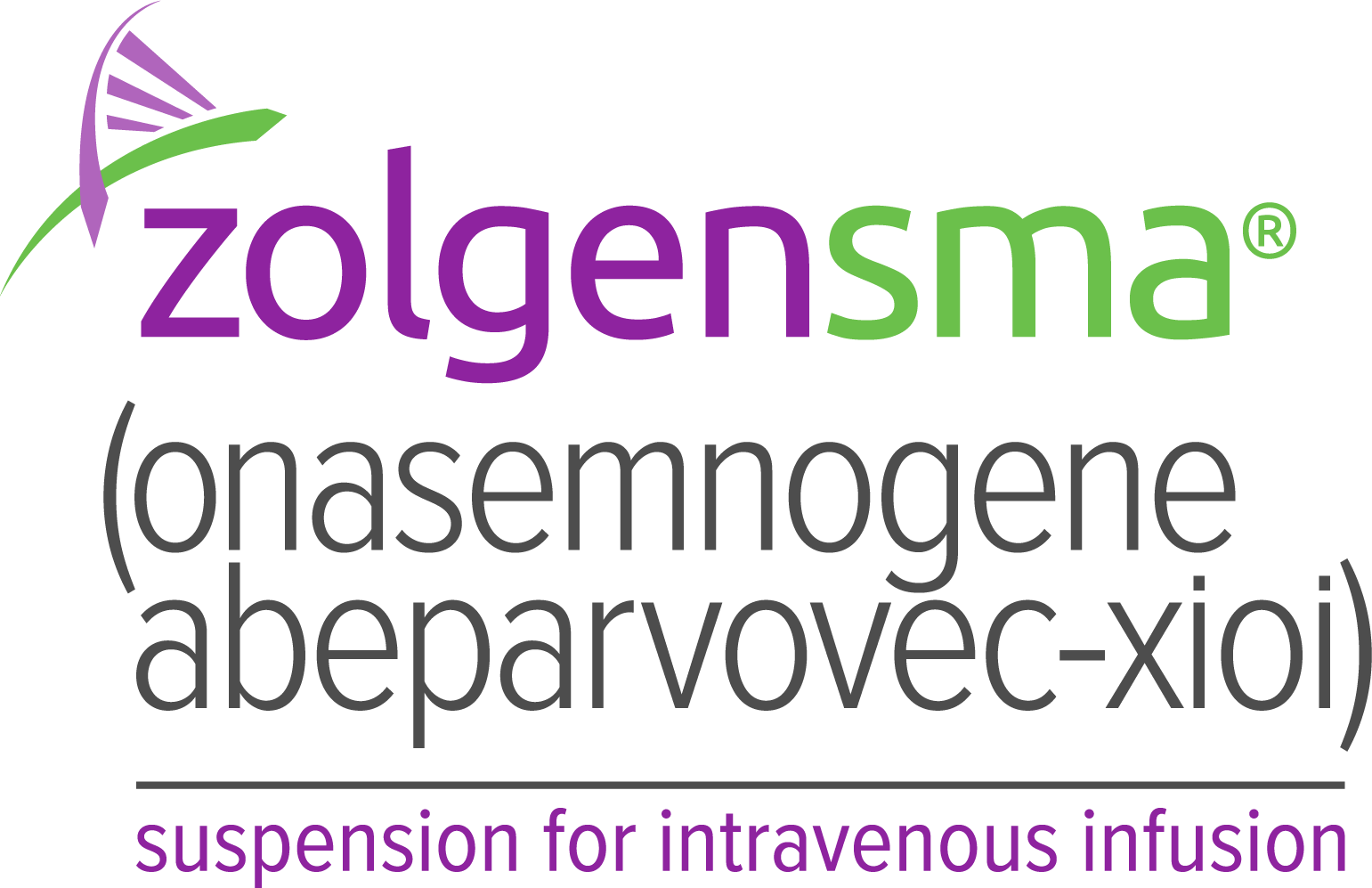Safety profile demonstrated in 4 open-label clinical studies1,a
The data set in the Full Prescribing Information includes 44 patients who were treated with ZOLGENSMA and ranged in age from 0.3 to 7.9 months at the time of infusion1
aData from ZOLGENSMA Prescribing Information, based on September 2018 safety data from 4 open-label studies.
Adverse reactions occurring in ≥5% of patients following treatment with ZOLGENSMA (N=44)1,2,a,b
ULN=upper limit of normal.
aAE data come from the ZOLGENSMA Prescribing Information. This is based on September 2018 safety data.
b41 patients received the therapeutic or higher dose of ZOLGENSMA and 3 patients received a lower dose.
cElevated aminotransferases include alanine aminotransferase and/or aspartate aminotransferase.
dOne patient (the first patient enrolled in NCT02122952) was enrolled prior to the protocol amendment instituting administration of prednisolone pre- and post-ZOLGENSMA infusion.
| Adverse Reactions | Patients, n (%) |
|---|---|
| Elevated aminotransferasesc,d (>ULN) | 12 (27.3%) |
| Vomiting | 3 (6.8%) |
ULN=upper limit of normal.
aAE data come from the ZOLGENSMA Prescribing Information. This is based on September 2018 safety data.
b41 patients received the therapeutic or higher dose of ZOLGENSMA and 3 patients received a lower dose.
cElevated aminotransferases include alanine aminotransferase and/or aspartate aminotransferase.
dOne patient (the first patient enrolled in NCT02122952) was enrolled prior to the protocol amendment instituting administration of prednisolone pre- and post-ZOLGENSMA infusion.
Acute serious liver injury, acute liver failure, and elevated aminotransferases can occur with ZOLGENSMA
Acute serious liver injury, acute liver failure and elevated aminotransferases can occur with ZOLGENSMA. Hepatotoxicity (which may be immune-mediated), generally manifested as elevated ALT and/or AST levels. Acute serious liver injury and acute liver failure, including fatal cases, have been reported with ZOLGENSMA use. In order to mitigate potential aminotransferase elevations, administer systemic corticosteroid to all patients before and after ZOLGENSMA infusion.1
- Immune-mediated hepatotoxicity may require adjustment of the corticosteroid treatment regimen, including longer duration, increased dose, or prolongation of the corticosteroid taper
Patients with preexisting liver impairment or acute hepatic viral infection may be at higher risk of acute serious liver injury/acute liver failure. Patients with ALT, AST, or total bilirubin levels (except due to neonatal jaundice) > 2 × ULN have not been studied in clinical trials with ZOLGENSMA. Carefully consider the risks and benefits of ZOLGENSMA therapy in patients with preexisting liver impairment.1
Although in the clinical trials and in postmarketing experience, asymptomatic aminotransferase elevations were very commonly reported, in the managed access program and in the postmarketing setting, cases of acute serious liver injury and acute liver failure, including a few cases with fatal outcomes, have been reported.1
- Some patients have experienced elevations in ALT and AST > 20 × ULN, prolonged prothrombin time and have been symptomatic (e.g., vomiting, jaundice), which required the use of corticosteroids, sometimes with prolonged duration and/or a higher dose
- If acute serious liver injury or acute liver failure is suspected, consult a pediatric gastroenterologist or hepatologist
In order to help manage a possible increase in liver aminotransferases, all patients should be treated with systemic corticosteroids before and after infusion. See Full Prescribing Information for important treatment steps, including corticosteroid recommendations, laboratory testing, and monitoring.
ZOLGENSMA postmarketing experience1
The following adverse reactions have been identified during post-approval use of ZOLGENSMA:
- Thrombotic microangiopathy and thrombocytopenia
- Acute liver failure (fatal and non-fatal) and acute liver injury
- Pyrexia
- Troponin increased
Because these reactions are reported voluntarily, it is not always possible to reliably estimate their frequency or establish a causal relationship to drug exposure.
ZOLGENSMA safety analysis update
The safety of ZOLGENSMA was evaluated in 102 patients in the clinical development program as of the June 2020 data cut3
Patients ranged in age from 0.3 months to 7.9 months at the time of administration. Follow-up time ranged from 1.0 to 25.7 months as of the data cut or at study completion. The most frequently reported adverse reactions (≥5%) following ZOLGENSMA administration were elevated hepatic transaminases and vomiting.3
As of June 2020 data cut, there have been no treatment-related serious adverse events reported in the ongoing observational long-term follow-up study of the completed START trial (LT-001). The 13 patients enrolled in the long-term follow-up were 4.6 to 6.2 years post dosing. Three patients received a low dose and 10 patients received a high dose. The dosage received by patients in the low-dose cohort was approximately one-third of the dosage received by patients in the high-dose cohort.3
Safety data continue to be collected.3
Perform the AAV9-antibody test prior to treatment with ZOLGENSMA
- The safety and efficacy of ZOLGENSMA in patients with anti-AAV9 antibody titers above 1:50 have not been evaluated1
- Retesting may be performed if anti-AAV9 antibody titers are reported as positive or elevated1
Elevated anti-AAV9 antibody titers are relatively uncommon in infants and young children4
In 2 US clinical trials, 2.4% (1/41) of patients screened were excluded for persistently elevated anti-AAV9 antibody titers.2
- Confirmation of anti-AAV9 antibody titers ≤1:50 was required prior to infusion1
- 1/16 patients in START and 0/25 patients in STR1VE were excluded in screening due to persistently elevated anti-AAV9 antibody titers2
Vector shedding
Temporary vector shedding of ZOLGENSMA occurs, primarily through bodily waste. Advise caregivers on the proper handling and disposal of patient stools. Instructions should be provided to patient families and caregivers regarding good hand hygiene when coming into direct contact with patient bodily waste. Disposable diapers should be sealed in disposable trash bags and then discarded into regular trash. These precautions should be followed for one month after ZOLGENSMA infusion.1
